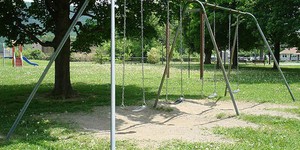Third Grade, Physics Science Projects (30 results)
Physics is the study of matter — what is it made of? How does it behave? What laws or equations describe it?
From subatomic particles, to the Big Bang, modern physicists study matter at a tremendous range of scales. There's a whole lot of interesting physics at the human scale, too.
|
Select a resource
Coding Projects
Sort by
|
Do you think you could build a car powered by nothing but air? A balloon-powered car is pushed forward by air escaping from a balloon, and it is fun and easy to build with materials you already have around your house. Can you imagine how you would want your own balloon-powered car to look? Can you design a car that will travel as far as possible? You can even measure your car's speed using your smartphone and a special sensor app. Get ready to grab some simple supplies to bring your idea to…
Read more
How can you make a train without wheels? By using magnets! In this project you will build a magnetic levitation ("maglev" for short) train that floats above a magnetic track. How much weight can you add to the train before it sinks down and touches the track?
Read more
New
Can AI understand human language? In the future, AI could aid in emergency interpretive service in the hospital when translators aren't available. But can current AI algorithms understand non-verbal languages like sign language? In this science project, you will test whether AI can learn sign language gestures or phrases to see if it can be used for interpretation.
Read more
In this engineering challenge, you will use limited materials to build a paper tower as tall as possible, but there's a twist! Your tower must also support a heavy weight at the top without collapsing. Looking for inspiration? You can see how other students have tackled this and other annual Science Buddies Engineering Challenges.
Teachers, lesson plan versions of this challenge are also available.
Read more
Try your hand at this engineering challenge. Can you build a "launcher" device to launch a ball as far as possible and a "receiver" to catch it? Building a receiver provides an extra twist to a traditional catapult project. Add to the challenge by using a limited set of materials to build your machine and calculate a score based on your throw distance and materials used.
Read more
In this engineering challenge, you will build a car powered by nothing but a rubber band. The farther the car goes, and the fewer materials you use to build it, the higher your score. The 2024 Science Buddies Engineering Challenge is over, but you can check out this page to see our other past engineering challenges and what this year's challenge will be! Teachers, lesson plan versions of this challenge are also available.
Read more
New
Have you ever walked next to your favorite ocean, lake, or creek and seen plastic waste everywhere? Have you ever thought about how much plastic breaks down into microplastics and pollutes waterways? Scientists are coming up with new ways to remove these microplastics from our waterways, and now you can test them out for yourself at home.
Read more
In this engineering challenge, you will build a ball run from paper and tape, but there's a twist! You want to make your ball run as slow as possible. How long can you make it take for the ball to get from the entrance to the exit? You can see how other students have tackled this and other annual Science Buddies Engineering Challenges.
Read more
3... 2... 1... 0— blastoff! In this science project, you will use a bottle rocket launcher to launch your own bottle rocket. You will load it with water and pressurized air, make several launches, and find out what makes your rocket soar the highest.
Read more
In this engineering challenge, you will build a device that can pick up a ping pong ball from a distance and return it to a start line. The farther away the ball is, and the fewer materials you use to build your device, the higher your score.
You can see how other students have tackled this and other annual Science Buddies Engineering Challenges.
Read more
"Swing me higher, Mommy, higher!" Kids love to ride the swings at the playground. The back-and-forth motion of a swing demonstrates the physics of a pendulum. In this experiment, you will investigate the factors that affect the speed and duration of a pendulum's swing, also called an oscillating motion. You can even use your phone and a sensor app to record your pendulum's movement and determine its period of oscillation.
Read more
Inspired by real-world reusable rockets, in this engineering challenge, you will design and build a device to catch a falling rocket so it lands vertically. Drop the rocket from higher and higher heights to get a better score! The 2025 Science Buddies Engineering Challenge is over, but you can check out this page to see our other past engineering challenges and what this year's challenge will be! Teachers, lesson plan versions of this challenge are also available.
Read more
|


















